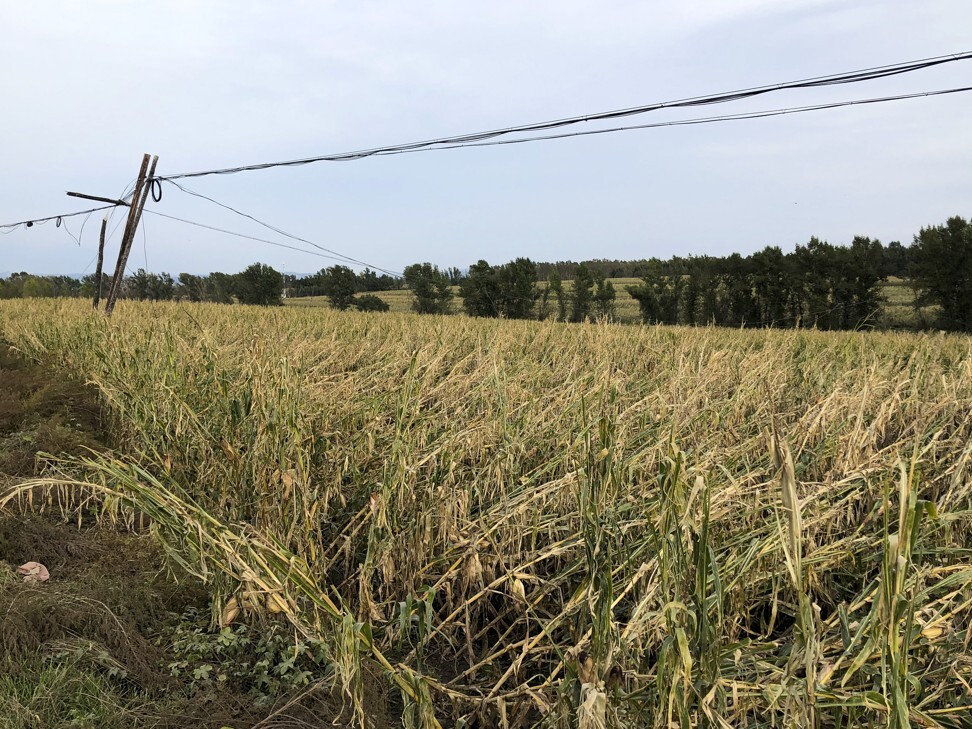China’s corn heartland Heilongjiang grapples with shortage of farm workers
- China’s farmers are struggling with rural labour shortages ahead of the autumn harvest, just as concerns mount about the security of the nation’s grain supply
- Hundreds of millions of people have abandoned the countryside for better paying city jobs over the past four decades, leading to phenomenon called rural hollowing

Farmers in China’s northeastern province Heilongjiang – from the eastern plains to the western hills – are facing a common problem as they prepare for the autumn harvest: a shortage of workers.
“It’s very hard to find farmworkers nowadays, there are few young people in the village, they would rather go [to the cities] to find a job than plant crops,” said a farmer surnamed Xu from Acheng district in Harbin, the provincial capital.
With China’s rapid economic growth and astonishing pace of urbanisation over the past four decades, hundreds of millions of people have abandoned the countryside and migrated to urban areas for better paying jobs, leaving a shrinking working-age population in rural villages, a phenomenon analysts call rural hollowing.
Beijing has long stressed the need to boost automated farming, including by upgrading machinery to allow for more efficient large-scale production of higher-quality crops with less staffing. But that has not always compensated for the loss of labour in the countryside.
The impact of three recent typhoons and widespread flooding in Heilongjiang, China’s largest corn-growing province and a leader in farm mechanisation, has highlighted rural labour shortages in tandem with concerns about grain supply.
The storms flattened much of Heilongjiang’s corn crop and has made harvesting by machine impossible in some areas, raising further concern about lower yields in one of China’s agricultural heartlands.
“Farm machines are unable to do some work, so you have to have people to do it by hand. But you cannot find enough workers,” said Xu, adding the shortage has led to higher labour costs that smaller farmers often cannot afford.
Villages would be forced to continue using machinery to harvest their typhoon-damaged fields, even though it would result in some corn not being picked.

01:00
Chilli pepper farmers in China’s western Xinjiang region brace for bumper harvest
Some 350km (217 miles) northwest in Longjiang county, another farmer, who only gave his surname Zhao, also voiced concern about rising wages due to the lack of farm workers.
If he has to rely solely on manual labour for the autumn harvest, Zhao will need to hire at least 10 workers and pay each one 170 yuan (US$25) to 180 yuan per day, plus money for lunch and cigarettes.
The farmer tills 13.3 hectares (33 acres) of corn, most of which he rents from other villagers who have moved to cities to find jobs.
Longjiang’s rural population declined by 2,568 in 2018 from a year earlier, while the total number of urban and rural residents dropped by 3,085 to 580,847 the same year, according to data from the local statistics bureau.
China’s three northeastern provinces Heilongjiang, Jilin and Liaoning have all seen similar population declines, with 331,300 people leaving the region last year, government data showed.

Once a centre for industry, the three provinces are now known as China’s rust belt, thanks to their inability to shrug off an entrenched state-planning mindset and transition the economy away from reliance on dwindling resources.
Overall, China’s rural population fell by 12.39 million to 551.62 million people in 2019 and now accounts for 39.4 per cent of the country’s total, a sharp drop from 89.36 per cent seven decades ago, according to the National Bureau of Statistics (NBS).
China’s countryside has for decades been a source of low-cost migrant labour for manufacturers in the cities, but this has led to lower welfare and resource allocation to rural areas, resulting in a widening wealth gap.
The median per capita disposable income of rural residents was 6,682 yuan in the first half of 2020, just 34 per cent of incomes in urban areas, according to the NBS.
As the coronavirus pandemic ravaged the Chinese economy earlier in the year, many migrant workers impacted by the shutdown in manufacturing retreated to their villages.
Before the pandemic, a relatively small number of migrant workers – about 8.5 million people – had already begun “returning home for entrepreneurship and innovation”, the Ministry of Agriculture and Rural Affairs said at the end of last year.
But once there, they still face the same challenges of finding work.
Zhao, from Longjiang country, has taken on a second job as an insurance salesman because he does not earn enough from tilling the land.

North Korean rice farmers rush to counter food shortages and malnutrition worsened by Covid-19
“One year I planted 8.7 hectares of land but lost 50,000 yuan … you are still likely to lose money in a good year,” he said.
Despite soaring corn prices this year, Zhao said he was unlikely to benefit much as the typhoon had damaged much of his crop, meaning local traders would cut their purchase price.
Yang Baolong, president of the China Soybean Association and general manager at Beidahuang Group, the nation’s largest agricultural and agribusiness group, said the pandemic and typhoons were a wake-up call about the weaknesses of China’s agricultural sector.
“Agricultural banks no longer focus on loans to farmers, agricultural subsidies do not reach farmers, agricultural universities focus on finance and accounting instead of planting, soil fertilisation and gardening,” he said. “Even the agricultural television channel is always broadcasting real estate advertisement.”